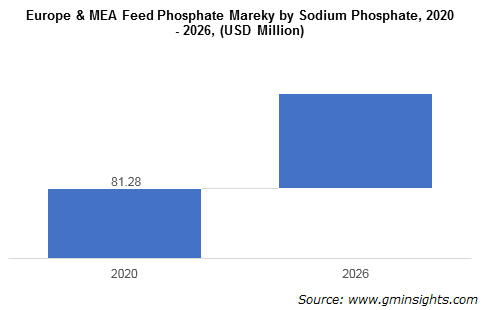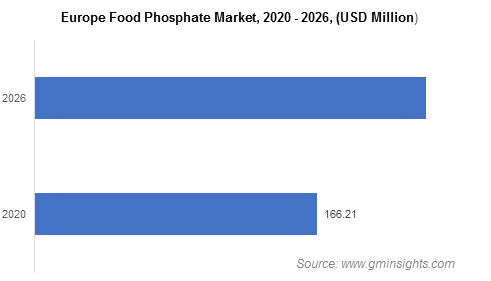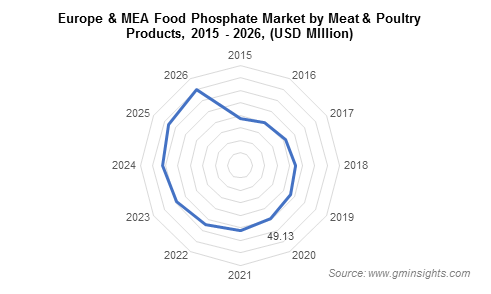Home > Food & Beverages > Food Additives > Texturizers and Thickeners > Europe & MEA Food Phosphate Market
Europe & MEA Food Phosphate Market Analysis
- Report ID: GMI4688
- Published Date: Jun 2020
- Report Format: PDF
Europe & MEA Food Phosphate Market Analysis
Food phosphate market from meat & poultry is set to register more than 6% CAGR through 2026 owing to rapid demand for functional and high-performance ingredients. They are widely used for flavor enhancement and pH stabilization in meat products. Also, they help in retaining moisture which keeps meat & seafood fresh. Industry players are rapidly using these products in an attempt to capitalize on emerging safety trends in meat industry.
Increasing consumer health consciousness along with changing dietary habit has led to growing meat & poultry product consumption. Phosphates are alkaline in nature thereby help in maintaining texture in meat, fish, chicken and fresh poultry products. Manufacturers are also utilizing these products to produce cured meats such as ham and beef jerky owing to its moisture retaining properties which is likely to accelerate Europe & MEA food phosphate market size.

Sodium phosphates are widely utilized as emulsifiers, preservatives, neutralizing agents, pH regulator in foods, and texturizer in foods. Sharp rise in demand for convenience food due to changing consumer preferences along with increasing awareness regarding using phosphates as a nutrient mainly in dietary supplements should drive Europe & MEA food phosphate market growth.
Europe & MEA Food phosphate industry from sodium phosphate is likely to surpass USD 110 million by 2026 owing to increasing demand for safe food preservative ingredients. Food phosphates are compatible with various packaging solutions such as aluminum, tetra packs, and plastics owing to its low toxicity and non-residual nature. Industry players are rapidly using these ingredients in an attempt to attract Gen X and millennial demographics which should boost the industry share.

Europe food phosphate demand is likely to witness over 5.5% CAGR through 2026. Rapid adoption of food phosphate powders in baking industry to prepare bread and dough, and other bakery preparations is likely to augment market demand. Furthermore, they are compatible with ingredients such as traditional dairy, flour, and plant-based milk solutions which help in preparing quick packaged bakery solutions thus boosting European food phosphate market trends.
Increasing demand for low calorie preparations and rising trends in gifting confectionery products should boost product demand. Industry players are rapidly adopting food phosphate solutions in manufacturing preparations such as chocolates, cured meat snacks, and hard candies. Manufactures in this region are shifting towards these products in an attempt to capitalize on emerging food safety trends by targeting millennial demographics which should boost European market share.

